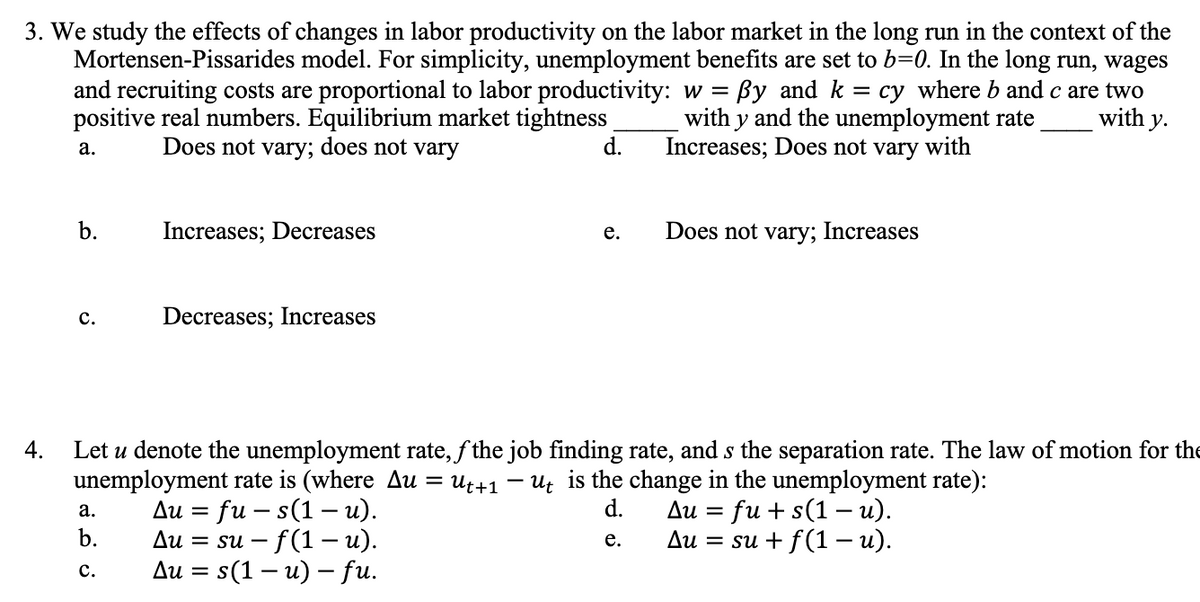3. We study the effects of changes in labor productivity on the labor market in the long run in the context of the Mortensen-Pissarides model. For simplicity, unemployment benefits are set to b=0. In the long run, wages and recruiting costs are proportional to labor productivity: w = By and kcy where b and c are two with y. positive real numbers. Equilibrium market tightness Does not vary; does not vary with y and the unemployment rate Increases; Does not vary with a. d. b. C. Increases; Decreases Decreases; Increases e. Does not vary; Increases
3. We study the effects of changes in labor productivity on the labor market in the long run in the context of the Mortensen-Pissarides model. For simplicity, unemployment benefits are set to b=0. In the long run, wages and recruiting costs are proportional to labor productivity: w = By and kcy where b and c are two with y. positive real numbers. Equilibrium market tightness Does not vary; does not vary with y and the unemployment rate Increases; Does not vary with a. d. b. C. Increases; Decreases Decreases; Increases e. Does not vary; Increases
Chapter16: Labor Markets
Section: Chapter Questions
Problem 16.12P
Related questions
Question
I need help of these questions with detail explanation

Transcribed Image Text:3. We study the effects of changes in labor productivity on the labor market in the long run in the context of the
Mortensen-Pissarides model. For simplicity, unemployment benefits are set to b=0. In the long run, wages
and recruiting costs are proportional to labor productivity: w = ßy and k = cy where b and c are two
with y and the unemployment rate
Increases; Does not vary with
with y.
positive real numbers. Equilibrium market tightness
Does not vary; does not vary
d.
4.
a.
b.
C.
Increases; Decreases
a.
b.
C.
Decreases; Increases
Let u denote the unemployment rate, fthe job finding rate, and s the separation rate. The law of motion for the
unemployment rate is (where Au
=
Ut+1 ut is the change in the unemployment rate):
d.
Au = fu + s(1 – u).
e.
Au = su + f(1 - u).
Au = fus(1-u).
Au = su - f(1 - u).
Au = s(1 - u) - fu.
e.
-
Does not vary; Increases
Expert Solution
This question has been solved!
Explore an expertly crafted, step-by-step solution for a thorough understanding of key concepts.
This is a popular solution!
Trending now
This is a popular solution!
Step by step
Solved in 2 steps with 1 images

Knowledge Booster
Learn more about
Need a deep-dive on the concept behind this application? Look no further. Learn more about this topic, economics and related others by exploring similar questions and additional content below.Recommended textbooks for you

